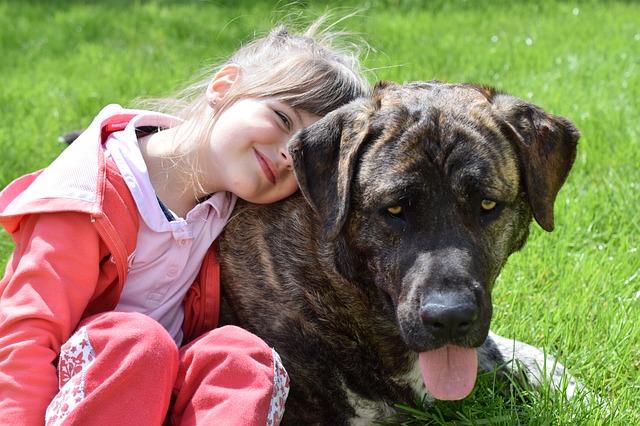Ask A Vet: Why Is My Dog Afraid Of Children & What Can I Do About It?
Some dogs do not like children. Some are even afraid of them We adults know that children are harmless, but your dog may not be so sure. For a dog that has not been raised around children, they can seem loud and sporadic. A child’s wail can even trigger a fear or prey response for a dog. A child’s size, sounds, and movements may seem foreign or threatening to a dog.
To get to the bottom of this behavior, we have to think about what it is like to be a dog. Dogs communicate with their bodies and sounds because they cannot use words. They are probably used to the way the adults in their environment react and speak. If you consider that from your dog’s perspective, a child may not seem like a human at all.
A child speaks in a higher pitch. A small child can be random and jerky in his movements. Children can move quickly and be unsteady sometimes. They may hurt pets without meaning to or even trip and fall on pets. Parents can react in a sporadic way too, in fear for the safety of the child which can add to the intensity of the situation. All of this together can create a powder keg situation for some dogs.
Dogs depend on body language to assess their environment and the other beings in their world. A child can send out mixed signals for a dog, because this is not how humans tend to communicate.
During a dog’s growth and development phases, he learns how to be a dog and also how to interact with humans. If there are no children present during this time period, a dog may learn to fear them or perceive them as a threat. But don’t worry: you can teach your dog to feel more secure around kids. Try to make the child’s presence into a harbinger of good. Ask your dog to sit and be calm and quiet in the presence of children and reward appropriate behavior. Be sure to use high value treats that she wants very much. Make sure that your priority is keeping everyone safe and never punish your dog for acting on her instincts.
Because dogs can’t speak from themselves, adult humans need to speak for them. According to Debbie Martin, Veterinary Technician Specialist in Behavior, a dog who is politely communicating its unease with the situation (avoiding eye contact, looking away or walking away), will have to speak louder (growl or even snap) if the message is not responded to appropriately. Ignoring these signals and forcing an interaction will only intensify your dog’s fear of children and create an unsafe situation.
It is our responsibility as dog guardians to familiarize ourselves with a dog’s cues. Adult humans need to learn how to interpret dog body language, so they can assess the situation and not only be the child’s advocate, but also the dog’s advocate.
As with all things dog, your veterinarian is your first and best resource about your dog. If your dog is afraid of children, you may need additional help from a veterinary behaviorist.
Do you love to learn about dogs? I love to share about them! Find me on Facebook by clicking here.
To get to the bottom of this behavior, we have to think about what it is like to be a dog. Dogs communicate with their bodies and sounds because they cannot use words. They are probably used to the way the adults in their environment react and speak. If you consider that from your dog’s perspective, a child may not seem like a human at all.
Dogs depend on body language to assess their environment and the other beings in their world. A child can send out mixed signals for a dog, because this is not how humans tend to communicate.
During a dog’s growth and development phases, he learns how to be a dog and also how to interact with humans. If there are no children present during this time period, a dog may learn to fear them or perceive them as a threat. But don’t worry: you can teach your dog to feel more secure around kids. Try to make the child’s presence into a harbinger of good. Ask your dog to sit and be calm and quiet in the presence of children and reward appropriate behavior. Be sure to use high value treats that she wants very much. Make sure that your priority is keeping everyone safe and never punish your dog for acting on her instincts.
It is our responsibility as dog guardians to familiarize ourselves with a dog’s cues. Adult humans need to learn how to interpret dog body language, so they can assess the situation and not only be the child’s advocate, but also the dog’s advocate.
As with all things dog, your veterinarian is your first and best resource about your dog. If your dog is afraid of children, you may need additional help from a veterinary behaviorist.
Do you love to learn about dogs? I love to share about them! Find me on Facebook by clicking here.














Post a Comment